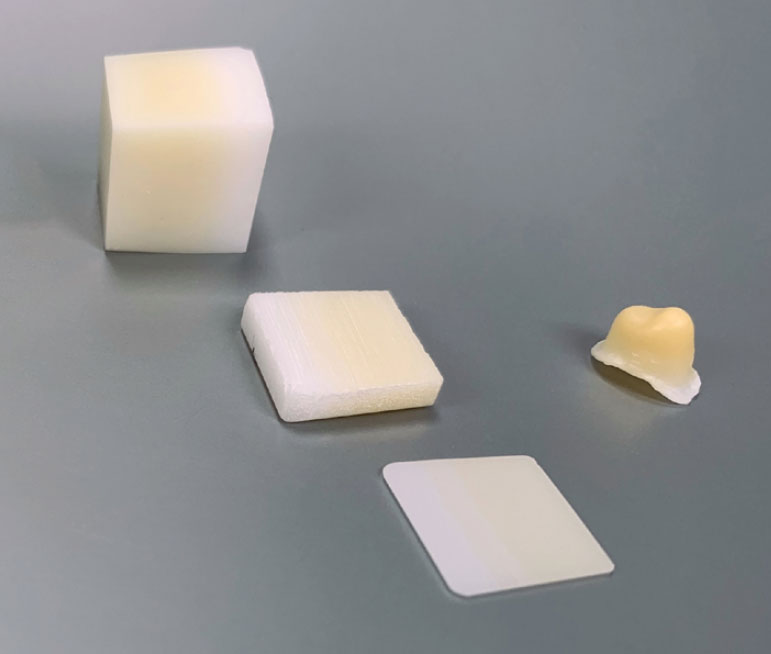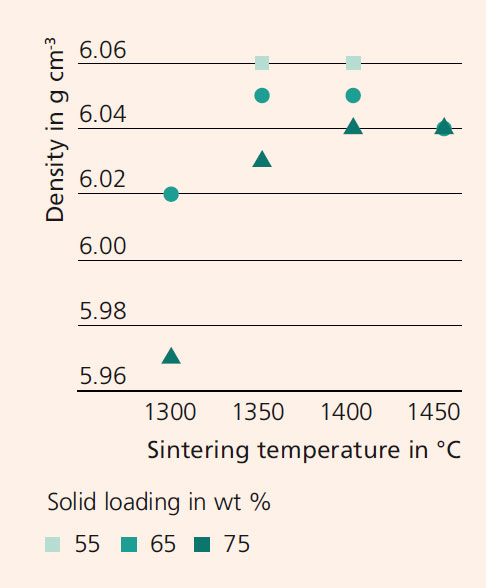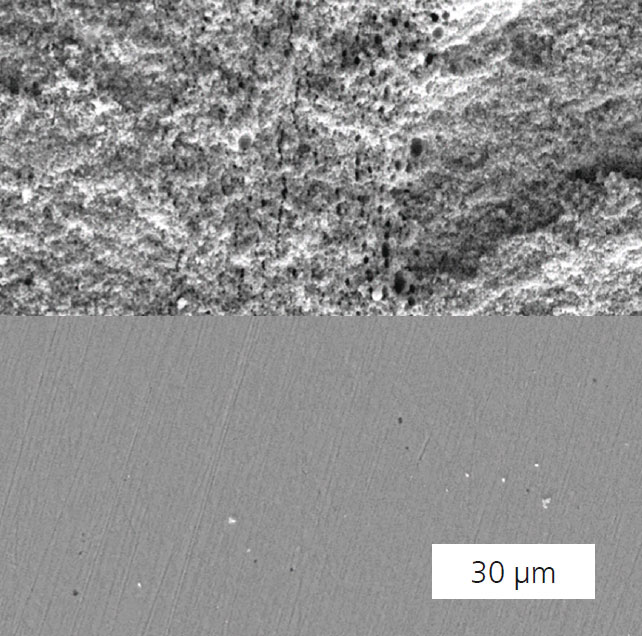
Pressure slip casting of multilayer blanks for dental restoration
Current research




For more than two decades, zirconia has seen growing interest for applications in the dental market. The industry network Aegis Communications predicts an annual sales growth of up to 9.3 %. Patients place increasing importance on aesthetic aspects. This puts a strong focus on the development of cost-effective processes to adapt color and translucency. Zirconia offers several advantages over other materials: good biocompatibility, reduced plaque deposits and low thermal conductivity. Additionally, health risks from allergic reactions are unlikely.
Pressure slip casting
Pressure slip casting is used to produce technical ceramics on an industrial scale. For some years now, this technology has also been used in dental ceramics. In particular, the processing of slips with a small particle size is a major challenge. Small particle sizes are a crucial requirement for highly mechanically loaded components, e.g. in dental restoration.
Good aesthetics without veneering
IKTS scientists were able to manufacture multi-layer blanks for dental restoration through pressure slip casting within a joint project with an industrial partner. Gradients in color and translucency of natural teeth were implemented as early as in the shaping process, whereas previously it had been necessary to veneer the material with glass or glass-ceramics in a complex subsequent step to meet aesthetic requirements. Two major concepts were vital to implement the process: the doping of zirconia offers a straightforward approach to alter color and translucency. Additionally, tailored mixing of slurries with different dopants allows for gradients without the formation of visible layers.
Color gradients with doped slurries
After selecting a suitable mold material, the researchers defined optimized process parameters for the preparation of the slurries by agitator bead mills. With a particle size of 0.18 μm, a specially designed pressure slip casting cell allowed for the generation of a homogeneous and dense microstructure with good mechanical properties. Subsequently, process dependencies such as the influence of solid loading (55–75 %) and casting pressure (15–25 bar) on density and microstructure were investigated. During the casting process, the precise addition of slurries with different dopings resulted in the generation of multi-colored blanks with 20 mm height. These components meet the high standards set in terms of color gradient and translucency. At the interface of the differently doped slurries, no inhomogeneity was found after sintering. Besides aesthetics, these multicolor blanks also exhibit very good mechanical properties (biaxial strength of 1050 MPa). Final machining experiments with a dental milling machine confirmed the high suitability of the blanks for the manufacturing of multicolor restoration material.
For applications in the field of medical technology, we provide the customized development of oxide ceramic components and technologies as well as customized manufacturing of semi-finished products. For this scope, we are certified according to DIN EN ISO 13485.